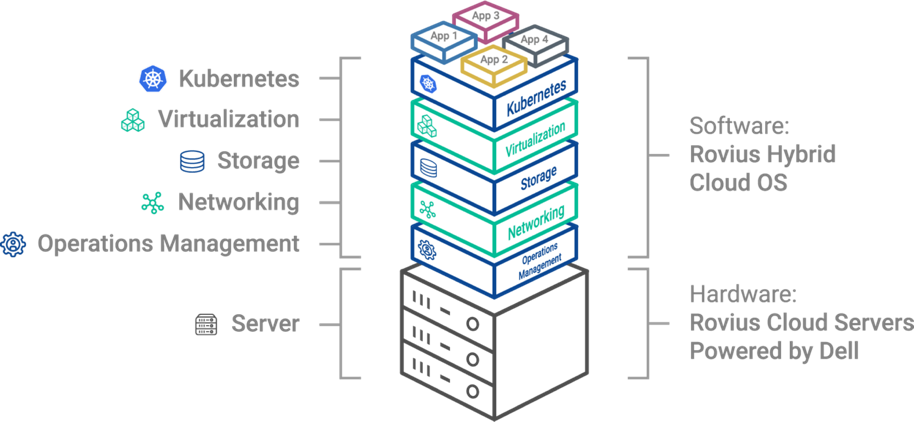Originally Published on Intellyx
When Amazon introduced the world to the idea of a public cloud infrastructure in the form of Amazon Web Services (AWS), its dynamic nature and ease-of-use captured the imagination of IT and business executives alike, and the media heralded it as the next ‘big thing.’
Enterprise technology vendors were quick to respond with what they claimed would replicate cloud-like self-provisioning and scaling on-premises, thus coining a new term: private cloud.
This private cloud, however, was largely a misnomer. In order to take advantage of private cloud, organizations essentially had to get into the cloud provisioning business.
While some of the private cloud’s component technologies mimicked elements of the self-provisioning and dynamic nature of public cloud deployments, the organization was still responsible for the configuration and management of the private cloud environment itself.
Moreover, private cloud deployments were never able to replicate one of the greatest advantages of the public cloud: on-demand scaling.
Nevertheless, enterprise leaders continue to seek out ways to create organizational agility and are, therefore, putting more workloads in the public cloud. At the same time, they need to continue to meet security, compliance and performance demands, which require that some workloads continue to run on local infrastructure.
This balance between public and private cloud deployments has become the new normal. Organizations now seek a way to synthesize this new hybrid deployment architecture into a single, manageable infrastructure in which workloads can move seamlessly between on-premises and public cloud deployments based on business value and corporate demands.
We call this architecture Hybrid IT.
THE HYBRID IT PIPE DREAM
Hybrid IT sounds great on paper: create a seamless, fluid architecture that has all of the dynamic capabilities, ease-of-use, and scalability of the public cloud; ensure the freedom from lock-in by having multiple cloud providers; and then combine that flexibility with the control benefits of on-premises infrastructure — and then move workloads seamlessly across it.
The reality, however, is much more complicated.
Private cloud deployments are based almost exclusively on proprietary technology stacks. Some require proprietary hardware. Others require the use of a proprietary hypervisor.
But whatever the requirement, this lack of an open, agnostic approach makes it difficult to integrate different types of deployments.
In addition, each attempt to integrate on-premises deployments and public cloud still requires the IT organization to build both the underlying infrastructure and the skills necessary to effectively manage a cloud environment — a task that proves to be much harder than it sounds.
As a result, most private cloud deployments are nothing more than glorified clusters of virtual machines with few, if any, integrations to public cloud deployments — and those integrations that do exist are often brittle.
SOLVING THE HYBRID IT CHALLENGE WITH ACCELERITE ROVIUS
In March of 2016, Accelerite acquired CloudPlatform from Citrix and used it as a foundation to build a solution that would meet the unique challenges of hybrid cloud deployments. The company released the resulting solution, called Rovius Cloud, in September of this year.

Figure 1: The Rovius Cloud. Source: Accelerite
Unlike other attempts to solve the challenges of Hybrid IT, the Rovius Cloud is server, storage, and hypervisor agnostic — enabling enterprise organizations to take advantage of commodity hardware while leveraging their existing investments.
The core of the solution — what Accelerite calls Hybrid Federation Manager— acts as an orchestrator, federating on-premises resources with public cloud resources from Amazon (Microsoft and Google coming soon).
The hybrid cloud platform represents both local and public cloud-based resources as ‘virtual zones’ enabling administrators to transparently manage them and move workloads between them as necessary — solving the private cloud scale problem.
Rovius Ops Manager provides resource discovery, infrastructure and performance monitoring, log aggregation and analytics, and capacity planning, thus providing organizations a fully integrated management platform for their hybrid infrastructure.
Finally, recognizing that enterprises don’t want to or need to be in the ‘cloud management business,’ organizations can deploy Rovius onto bare metal and have a fully working deployment in less than an hour — which Accelerite then fully manages and maintains.
On the 23rd of January, Accelerite doubled-down on this notion of helping enterprises create a dynamic, scalable hybrid cloud architecture with the release of the company’s Rovius Cloud Appliance.
“This solves the last-mile issue for enterprises struggling to build a hybrid cloud,” explained Rajesh Ramchandani, Accelerite’s General Manager and Vice President of Cloud Products. “Our new appliance powers our highly available cloud control plane. It comes in multiple configurations and various capacities and its scale-out architecture allows enterprises to add as many cloud appliances as necessary to build out their hybrid cloud without any downtime.”
THE INTELLYX TAKE
The march to a Hybrid IT future is well underway. Enterprise executives are increasingly accepting their new reality and are now seeking ways to build and manage these hybrid architectures.
As they do so, they are faced with two primary options: build full-scale cloud development and management capabilities, or find a solution that does it for them.
While public cloud providers are simplifying integration to on-premises resources, the fact remains that they have little vested interest in doing so. The task of building fluid and highly integrated environments, therefore, will fall to the enterprise organizations themselves.
Some organizations may have the desire, capacity, and business motivation to build these capabilities internally — and will essentially become cloud businesses in their own right.
But for the vast majority of organizations, the effort to build such a capability will be a distraction rather than a virtue. For those organizations, an integrated solution that enables them to make Hybrid IT a reality without having to become a cloud business will be the key to their future.
Copyright © Intellyx LLC. At the time of this writing, Accelerite and Microsoft are Intellyx clients. None of the other companies mentioned are Intellyx clients. Intellyx retains full editorial control over the content of this paper.
